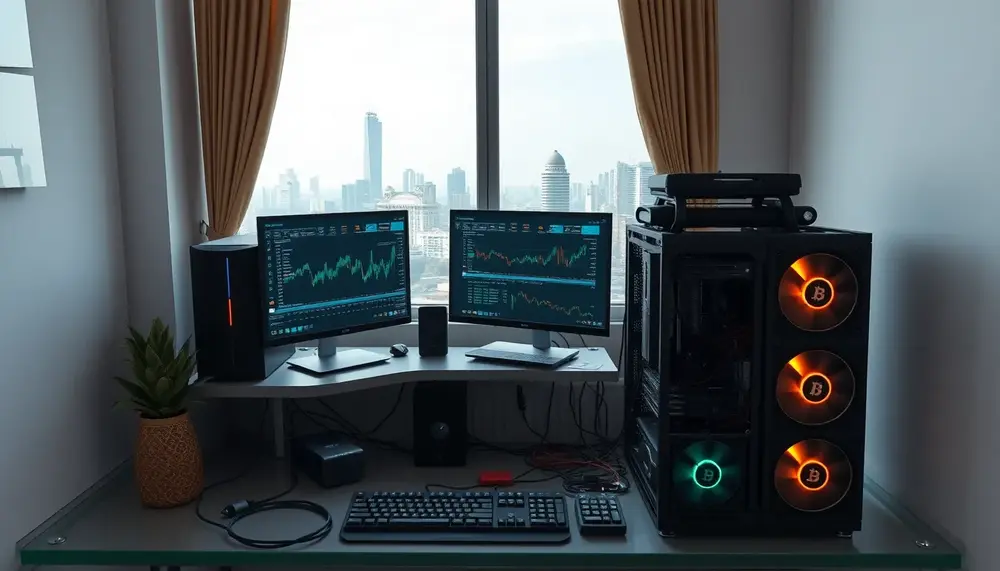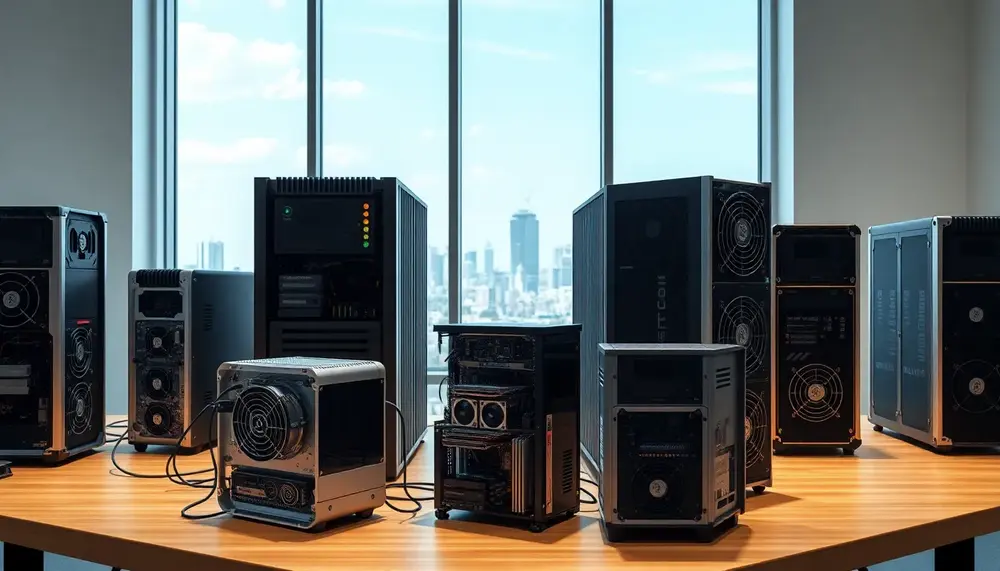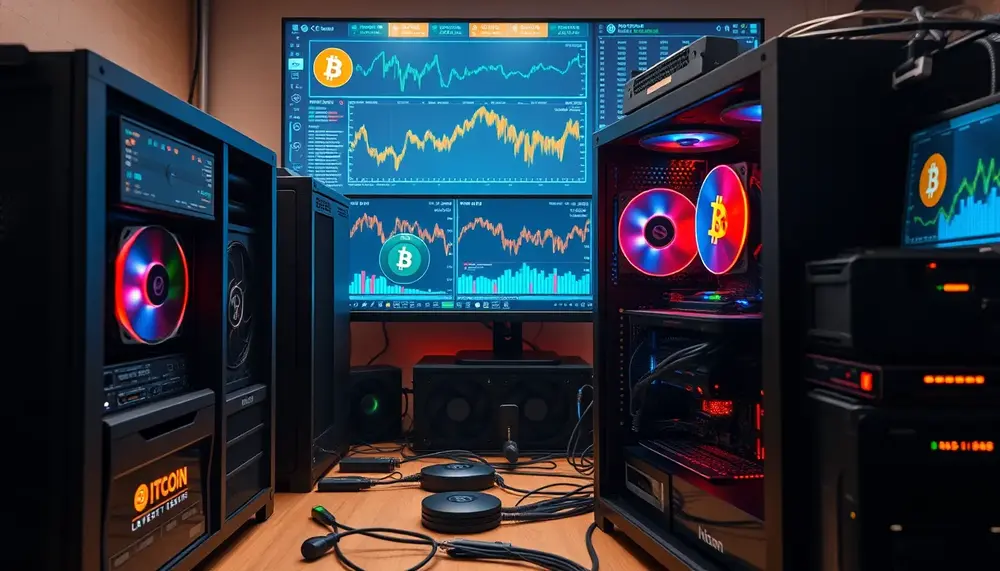Item
Item
What is an 'Item' in Bitcoin Mining?
In the world of Bitcoin Mining, the term 'Item' holds great relevance. Essentially, an item refers to a piece of data or information that contributes to the process of mining Bitcoin. This could be anything from a block of transactions to the computational power of your mining hardware.
Understanding 'Items' Better
When you mine Bitcoin, you're part of a network of miners. All these miners work together to verify new transactions and add them to the Bitcoin's public ledger, known as the blockchain. The items in this case are the individual transactions or blocks that need to be verified and processed.
Items and Mining Rigs
The term 'item' also applies to the components of your mining setup, known as a mining rig. This includes the processor, the graphics card, and other necessary hardware. Each of these components, or items, plays a crucial role in the efficiency of your mining operation.
'Item' in the Broader Context
It's important to understand that the term 'item' isn't unique to Bitcoin mining. It's a generalized term that applies to any form of data in the realm of computing. In the context of Bitcoin mining, however, the items are the specific elements involved in mining or the mining process.
Significance of 'Items' in Bitcoin Mining
Each item in Bitcoin mining, whether it's a block of transactions or a component of your mining rig, plays a part in determining your mining success. Hence, understanding and managing these items is key to optimizing your mining efforts and maximizing your Bitcoin earnings.
Blog Posts with the term: Item

The article discusses the initial investment required for crypto mining in India, emphasizing costs related to hardware, setup, and software. It also highlights key technical specifications needed for mining rigs, such as GPUs and cooling systems, while stressing the importance...

The article discusses the increasing popularity of USDT (Tether) mining and highlights its benefits, such as stability and low entry barriers. It also provides criteria for selecting reliable USDT mining sites and lists top platforms to consider in 2024, including...

Mining pool payout schemes determine how rewards are distributed among miners, with options like Pay-Per-Share (PPS) offering predictable payouts and others like Proportional rewarding based on contribution during block rounds. Each scheme has unique benefits tailored to different miner preferences...

The article explores the best GPUs for efficient Ravencoin mining, highlighting key factors such as hashrate, power consumption, price, cooling and durability, and availability. It recommends top-performing NVIDIA (RTX 3080 Ti, RTX 3090) and AMD (Radeon VII, RX 6800 XT)...

Bitcoin mining in Pakistan is gaining traction due to increasing awareness and potential profits, despite challenges like high electricity costs and equipment acquisition. The market for mining machines varies widely in price based on specifications and demand, with graphics cards...

This article provides a comprehensive guide to mining Ravencoin using GPUs, covering essential steps such as selecting the right GPU and software, optimizing your setup for better performance, and joining a mining pool. It explains that Ravencoin uses the ASIC-resistant...

Bitcoin mining in Nigeria is gaining popularity, driven by the potential profitability of using specialized machines to solve complex puzzles and earn Bitcoin; however, factors such as equipment costs, energy consumption, maintenance expenses, currency fluctuations, import duties, technological advancements, local...

Cloud mining allows individuals to participate in cryptocurrency mining through shared processing power from remote data centers, offering cost savings and accessibility without the need for personal hardware or technical expertise. The right cloud mining website template is crucial for...

The article explains various mining pool reward methods in cryptocurrency, such as Pay-per-Share (PPS), Proportional (PROP) rewards, Pay-per-Last-N-Shares (PPLNS), and hybrid approaches like PPS+ and Full Pay-per-Share (FPPS), highlighting their unique features, benefits, and trade-offs to help miners choose the...

This guide provides a step-by-step process for setting up and running a Litecoin miner on Linux, covering everything from necessary tools and software installation to connecting with the MINERGATE mining pool. By following these instructions, users can efficiently start mining...

The article explains the differences between meme coins and traditional cryptocurrencies, highlighting that meme coins are driven by social media hype with high volatility and lack intrinsic value, while traditional cryptocurrencies like Bitcoin and Ethereum have robust technological foundations, real-world...

Mining Cardano (ADA) on Android devices is accessible through a Proof-of-Stake mechanism, allowing users to mine ADA using smartphones or tablets by setting up the device, choosing a reliable mining app, and optimizing settings for efficient performance. This guide covers...

In DayZ, Bitcoin mining serves as a survival strategy where players convert virtual resources into in-game currency by managing equipment and trading strategically. Essential gear like PCs, PSUs, and GPUs are crucial for successful mining sessions that can significantly enhance...

The Bitcoin Mining Reward Table is crucial for miners as it outlines the rewards they earn from processing transactions, with initial block rewards of 50 BTC that halve approximately every four years to control supply and mimic gold's scarcity. This...

